After all, a structure was modern while it was being designed and built.
Why then, do so many movements and styles in the 20th-century fall undermodernism?
What was so different that designers felt the need to label their work as indicative of a new future?
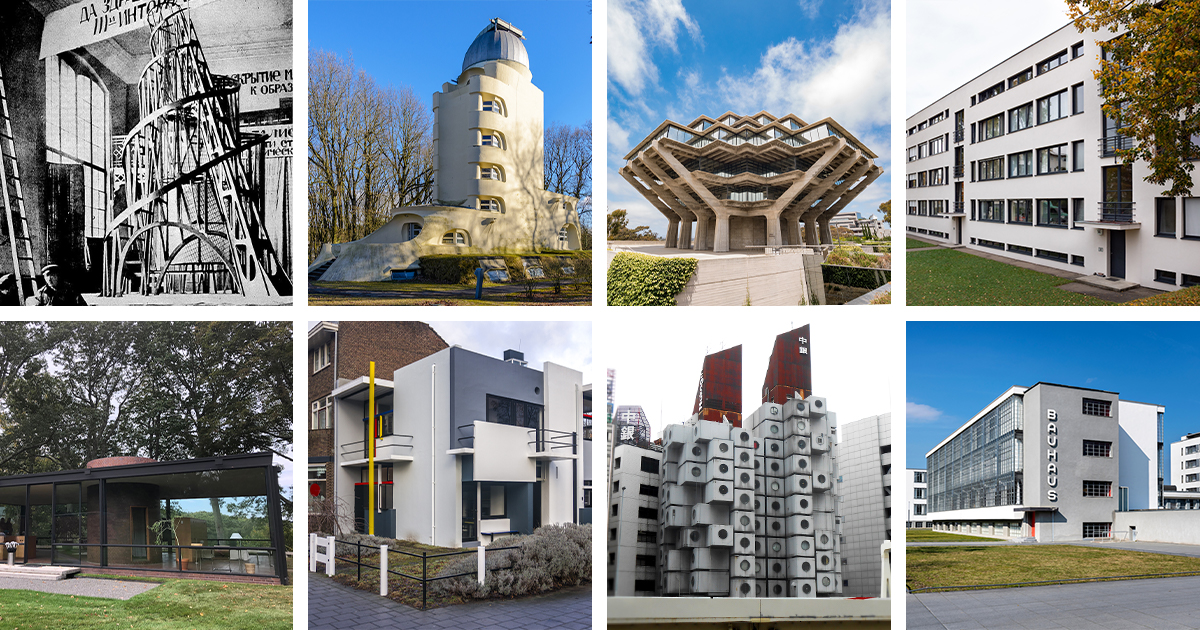
From left to right: Tatlin’s Tower, or Monument to the Third International; Einstein Tower, or Einsteinturm; Geisel Library of the University of California, San Diego; Weissenhof Estate; The Glass House; Rietveld Schröder Housed; Nakagin Capsule Tower; Bauhaus Building in Dessau
And why did architects feel the need to outline rules for our built environment in the first place?
Many of these questions have answers that are directly influenced by historic events.
Others are less direct and are engrained in a long history of design styles and cultural influences.
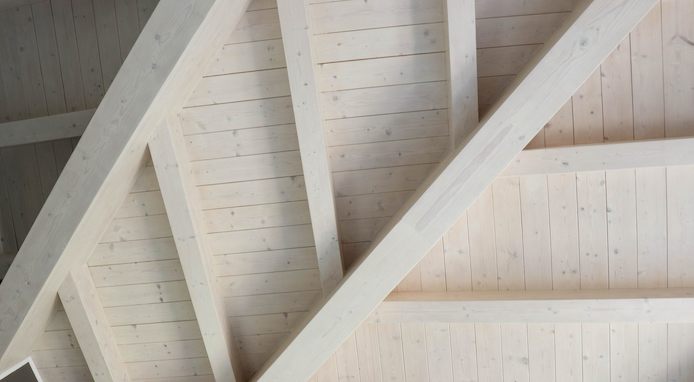
Photo:Stock Photosfrom Some pictures here/Shutterstock
What usually unites the different styles of modernism is a focus onlogic.
Modern design typicallyeliminates unnecessary visual noiseand reimagines spaces for theircore functions.
DesignerMassimo Vignelli, whose career ranged from graphic design to kitchenware and much more, described this logic-based process.

Weissenhof Estate (main building) by Ludwig Mies van der Rohe, Le Corbusier, Pierre Jeanneret, Walter Gropius, and more. (Photo:Stock Photosfrom Cinematographer/Shutterstock)
Good design is a matter of discipline.
It starts by looking at the problem and collecting all the available information about it.
If you understand the problem, you have the solution.

Bauhaus Building in Dessau by Walter Gropius (Photo:Stock Photosfrom Cinematographer/Shutterstock)
Its really more about logic than imagination.
Many of these modernist ideas became popular in the years between World War I and World War II.
Designers were motivated to rethink life in almost every way.
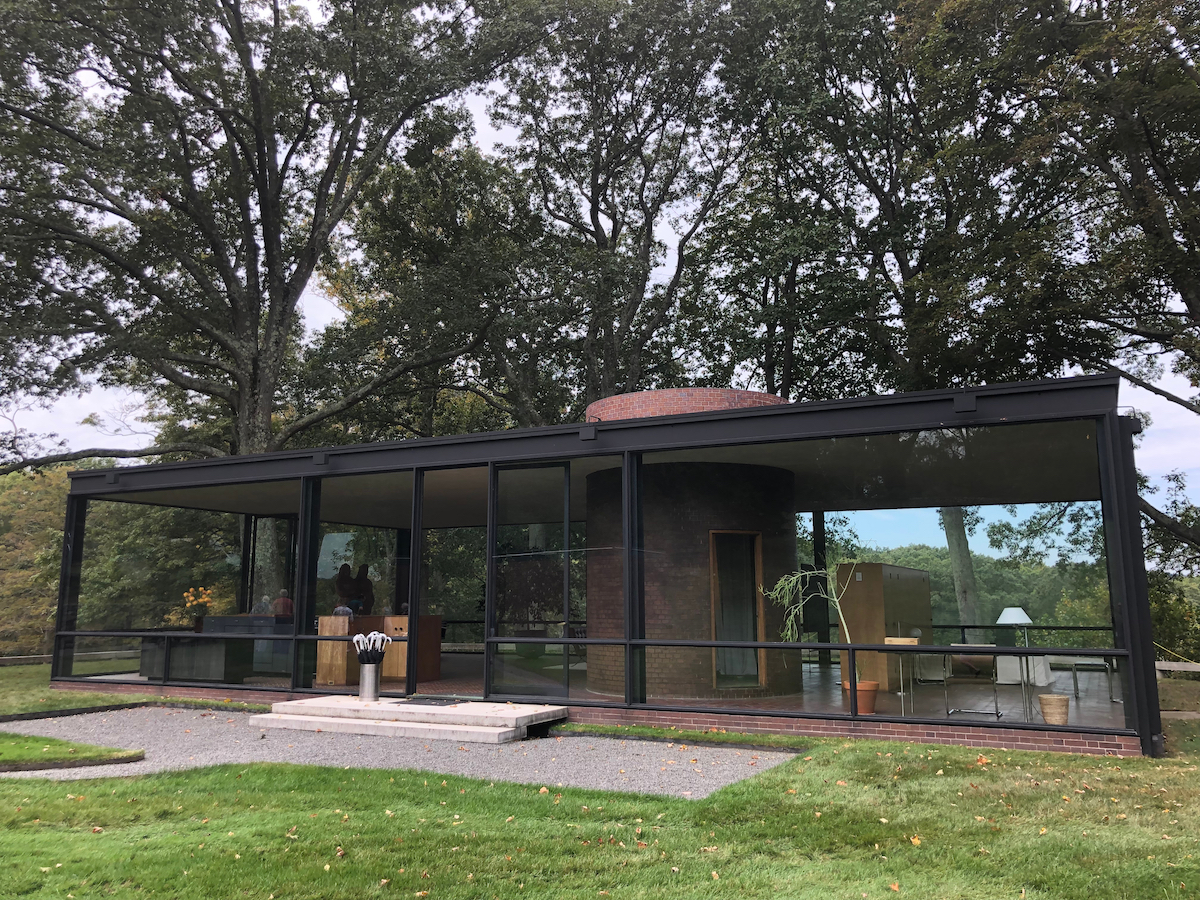
The Glass House by Philip Johnson (Photo:Stock Photosfrom Ritu Manoj Jethani/Shutterstock)
That is why modernism can be found in architecture, art, literature, and much more.
Some ideas also naturally bleed into other concepts.
However, these three broad ideas tend to remain the same.
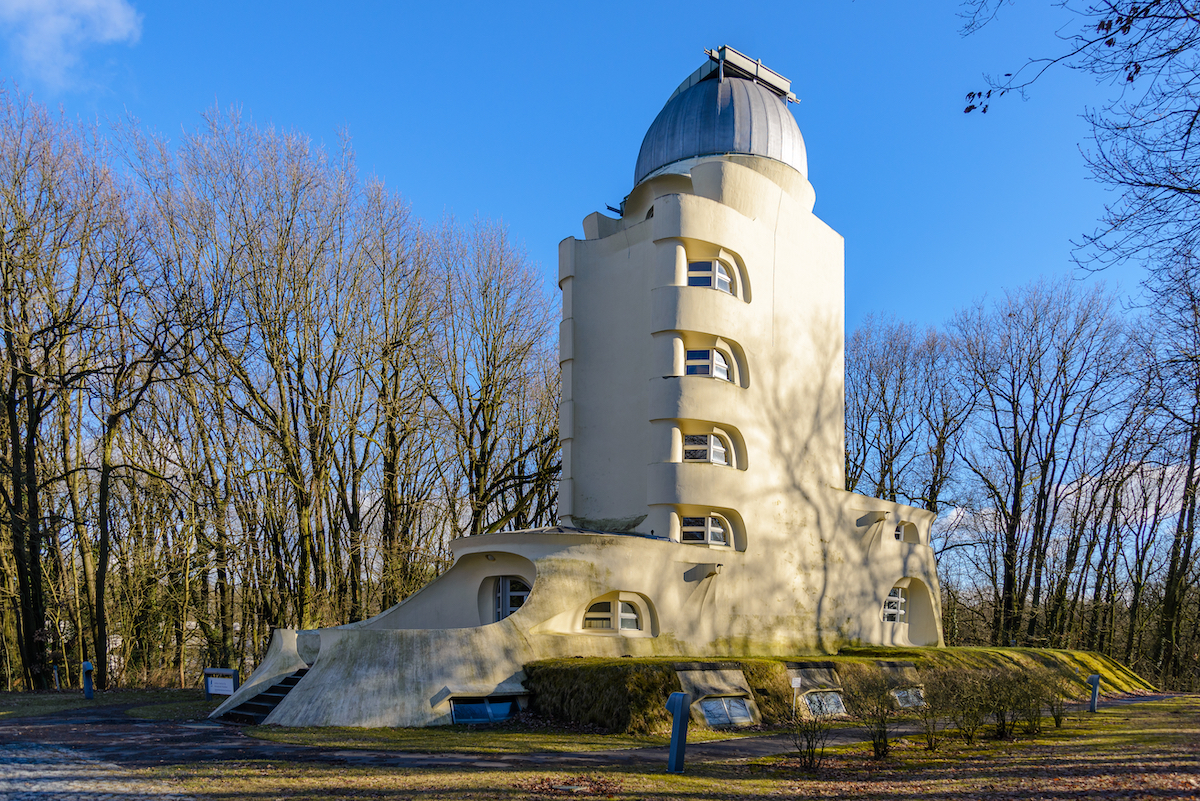
Einstein Tower, or Einsteinturm, by Erich Mendelsohn (Photo:Stock Photosfrom Peeradontax/Shutterstock)
This famous term, coined by renowned architect Louis Sullivan, does a good job of summarizing modernism.
Modern architecture styles are typically driven by the pursuit of logic.
This pursuit is clear in famous architectural ideas like Le Corbusiers machine for living.
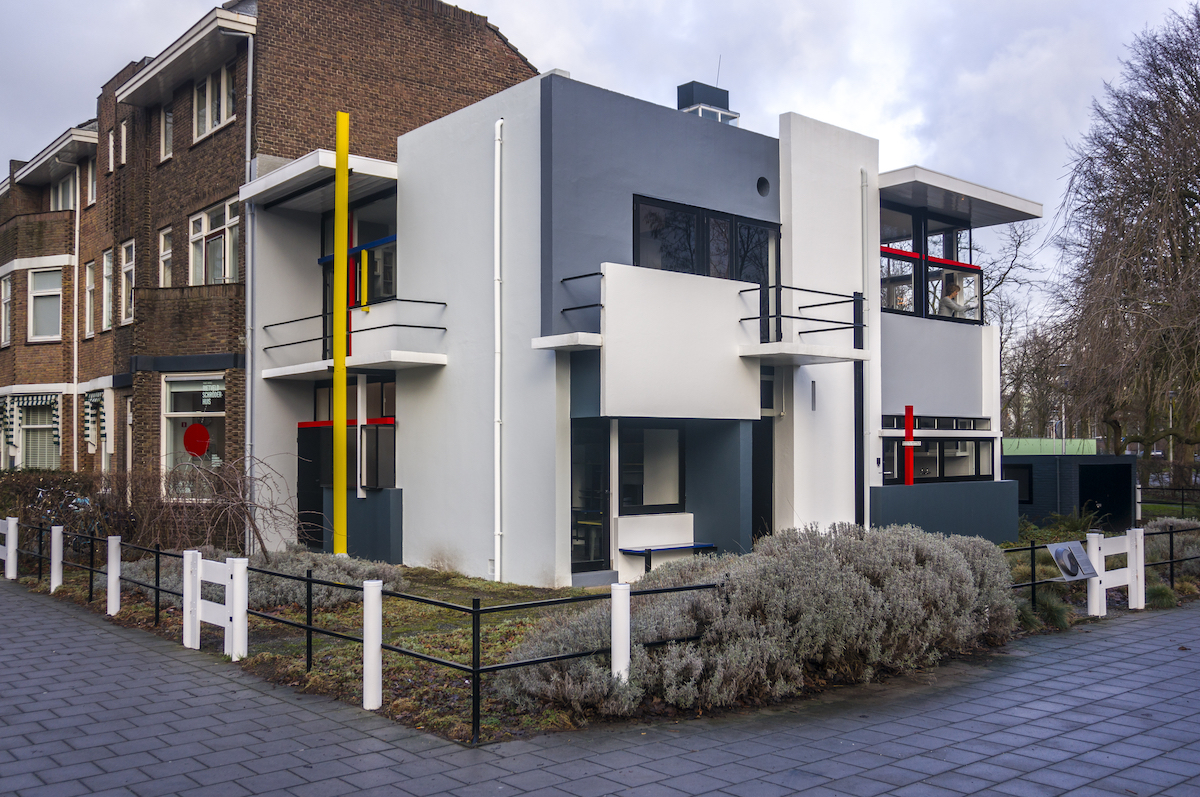
Rietveld Schröder House by Gerrit Rietveld (Photo:Stock Photosfrom www.hollandfoto.net/Shutterstock)
To modernists, a simple and clean solution is more beautiful than any meaningless ornamentation.
Designers also planned for their buildings and structures to be timeless.
Any added detail that did not serve a purpose was another opportunity for something to go out of style.
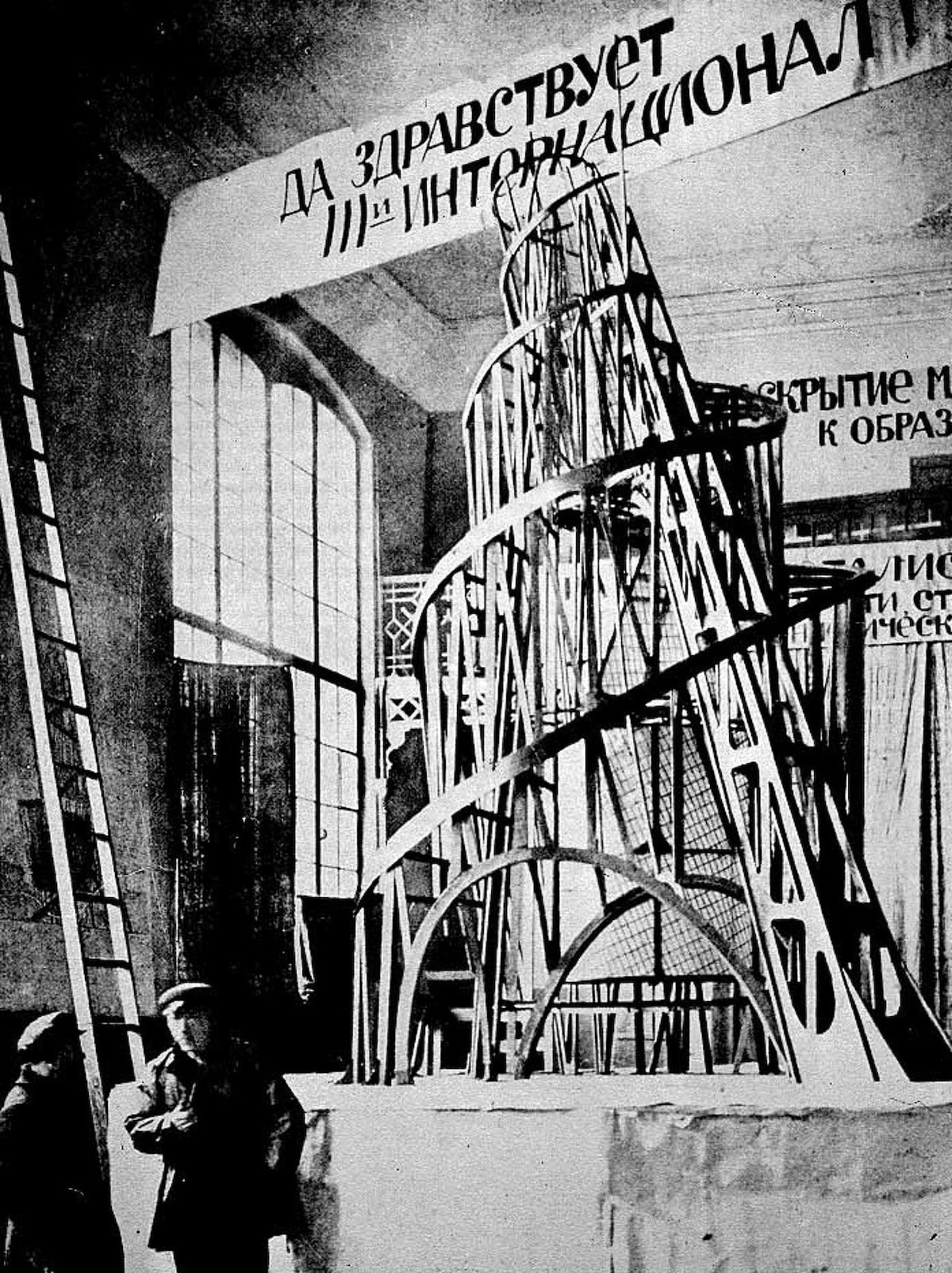
Tatlin’s Tower, or Monument to the Third International, by Vladimir Tatlin (Photo:Unknown [Public Domain])
However, you may be able to spot a few exceptions to the rule.
How exactly can you be sure that every piece of a building is designed for logic?
One potential rule-breaker is Ludwig Mies van der Rohe.
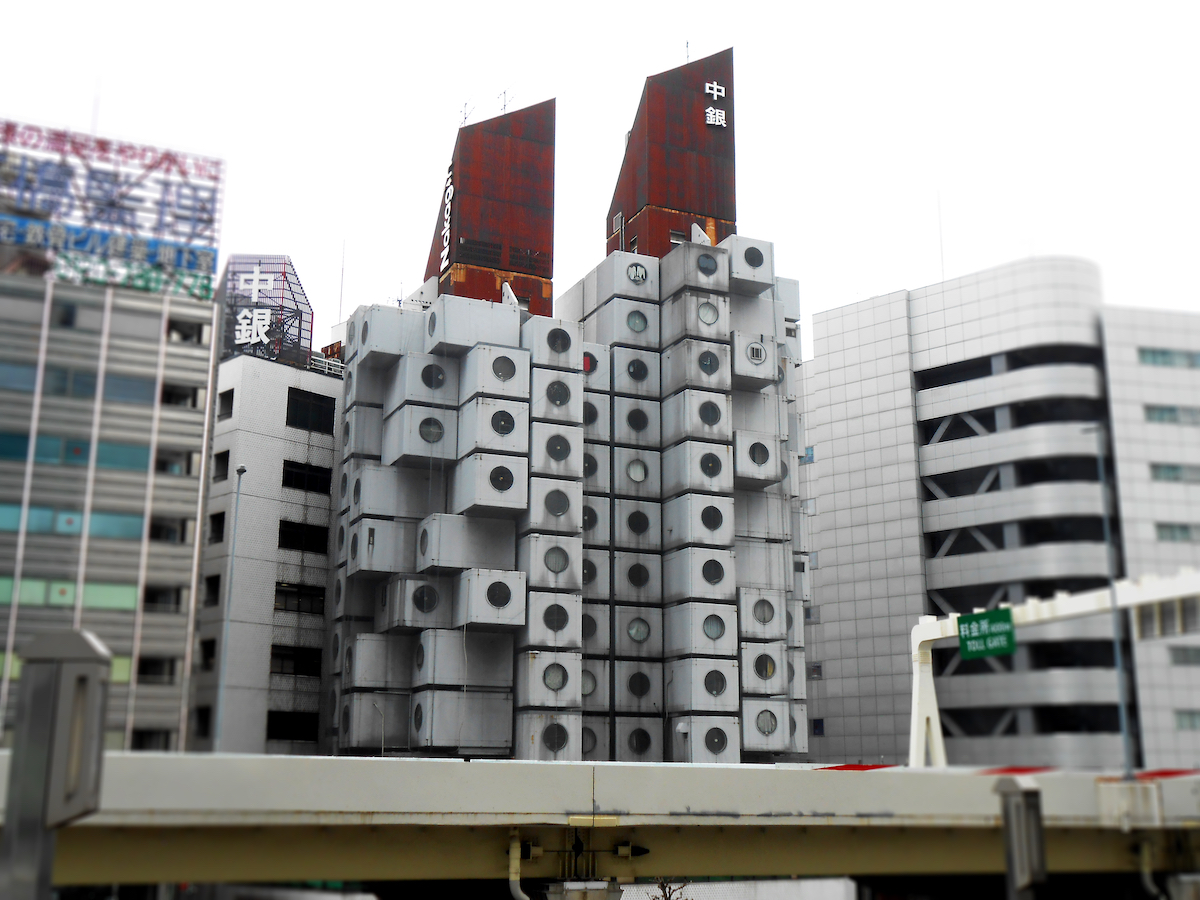
Nakagin Capsule Tower by Kisho Kurokawa (Photo:Stock Photosfrom serifetto/Shutterstock)
He was a devout believer in simplicity and is well known for saying less is more.
However, he is also known for leaving I-beams exposed in his projects and painted white.
Is it decoration to leave the structure revealed when it could have been covered by the wall?
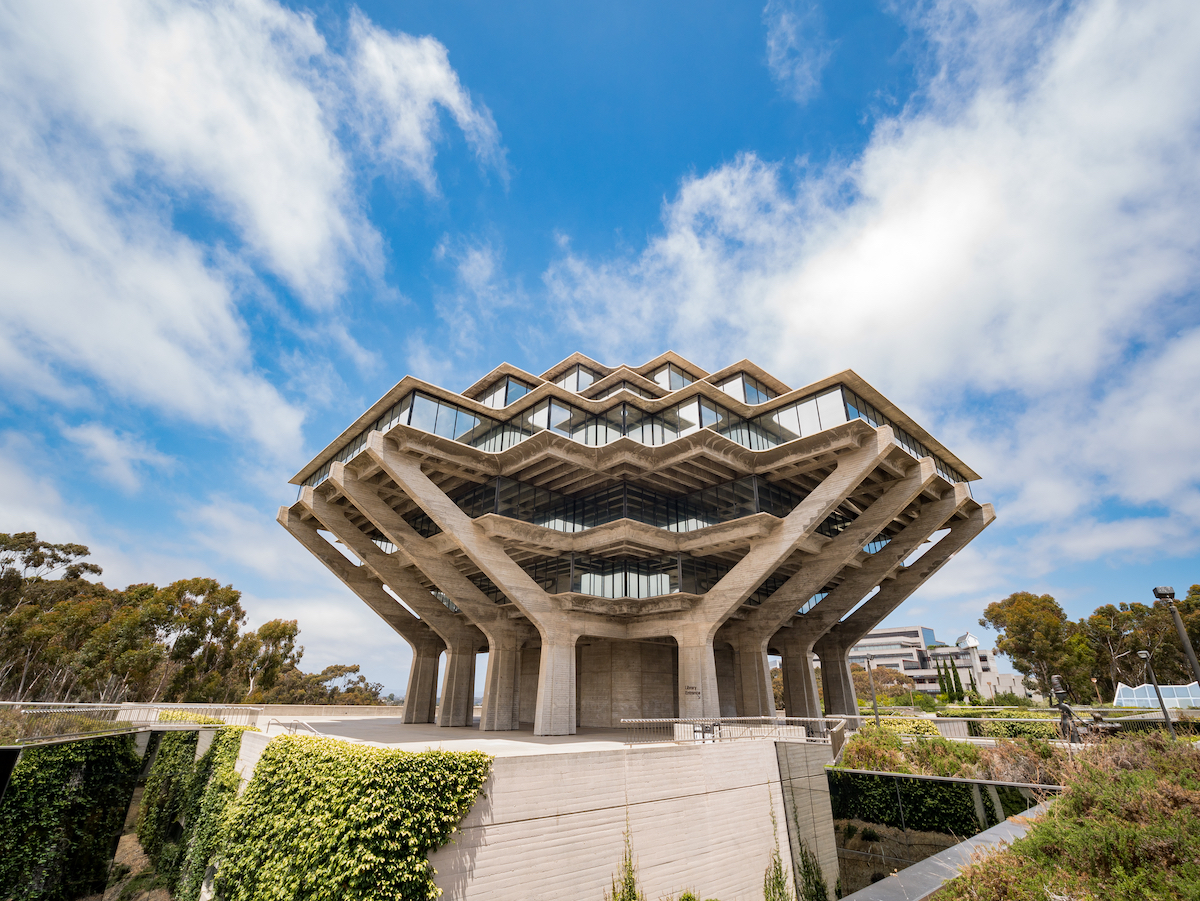
Geisel Library of the University of California, San Diego by William Pereira (Photo:Stock Photosfrom Kit Leong/Shutterstock)
Or is this design more rational since it conveys the honesty of materials?
It seems that pure logic is difficult to achieve when decoration is often a case of opinion.
Clean Lines
Clean lines are another byproduct of the idea that form should follow function.
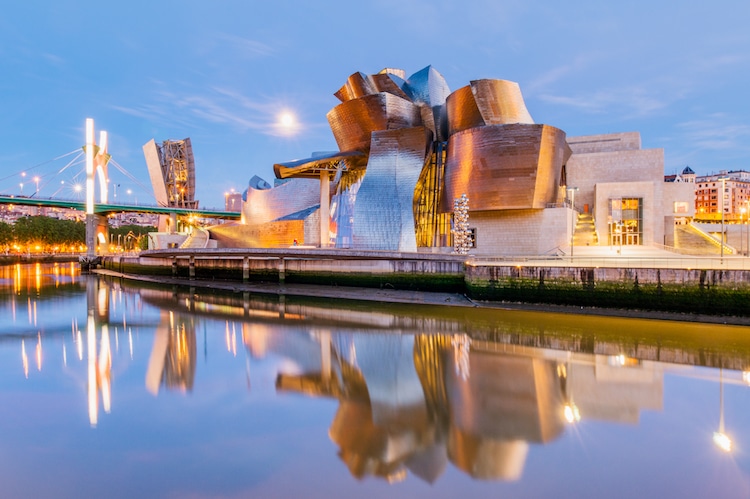
The Guggenheim Bilbao, an example of post-modern architecture (Photo:Stock Photosfrom Rudy Mareel/Shutterstock)
The guidelines for all of this dynamism were left clear and unbroken.
This is also related to honesty in the representation of materials.
(Photo:Stock Photosfrom Cinematographer/Shutterstock)
TheInternational Styleis probably the most famous form of modernism in architecture.
In fact, people often use the termsmodernist styleand International Style interchangeably.
This decision is in part due to many buildings of the time decorated with irrelevant historical influences.
There was also a need for quickly produced buildings as well as the material innovation around them.
These ideas and the pursuit of logic would later influence modernist movements around the world.
A few manifestos were written to define the rules of this global and perfectly rational style.
Similar to International Style, the Bauhaus school and its founders wanted to make good design accessible to everyone.
The Bauhaus building in Dessau by Walter Gropius is a great example of Bauhaus architectural principles.
Similar to the International Style, Mid-Century Modernism planned for a new rational future that reimagined spaceespecially the home.
Color is usually carefully composed with an otherwise simple or monochrome composition of natural materials.
It typically refers to the avant-garde work by Europeans from 1905 to the 1930s.
Expressionist architecture gives an insight into the social and political difficulties of the time.
Even those who do not know much about De Stijl architecture can probably spot a resemblance to paintings byMondrian.
Like almost all styles on this list, it is accompanied by an art movement that held similar values.
Though there are constructivist buildings, many famous constructivist projects exist somewhere between sculpture and architecture.
It was a monument to industrybut mostly to theComintern.
Nakagins Capsule Tower is one of the most well-known examples of Metabolist structures.
Brutalism was popularly used for social housing projects since its minimalism and functionalism made it an economical option.
What Came After Modernism?
Postmodernism eventually fell out of popularity for a series of new styles.
The aesthetic we see today that is often mistakenly labeled modern is better referred to as contemporary.
Will we again push back against the logic-based approach and begin focusing on ornamentation?
Will new technology define decoration in the future?
Will we focus more on environmental design?
Only time will tell.